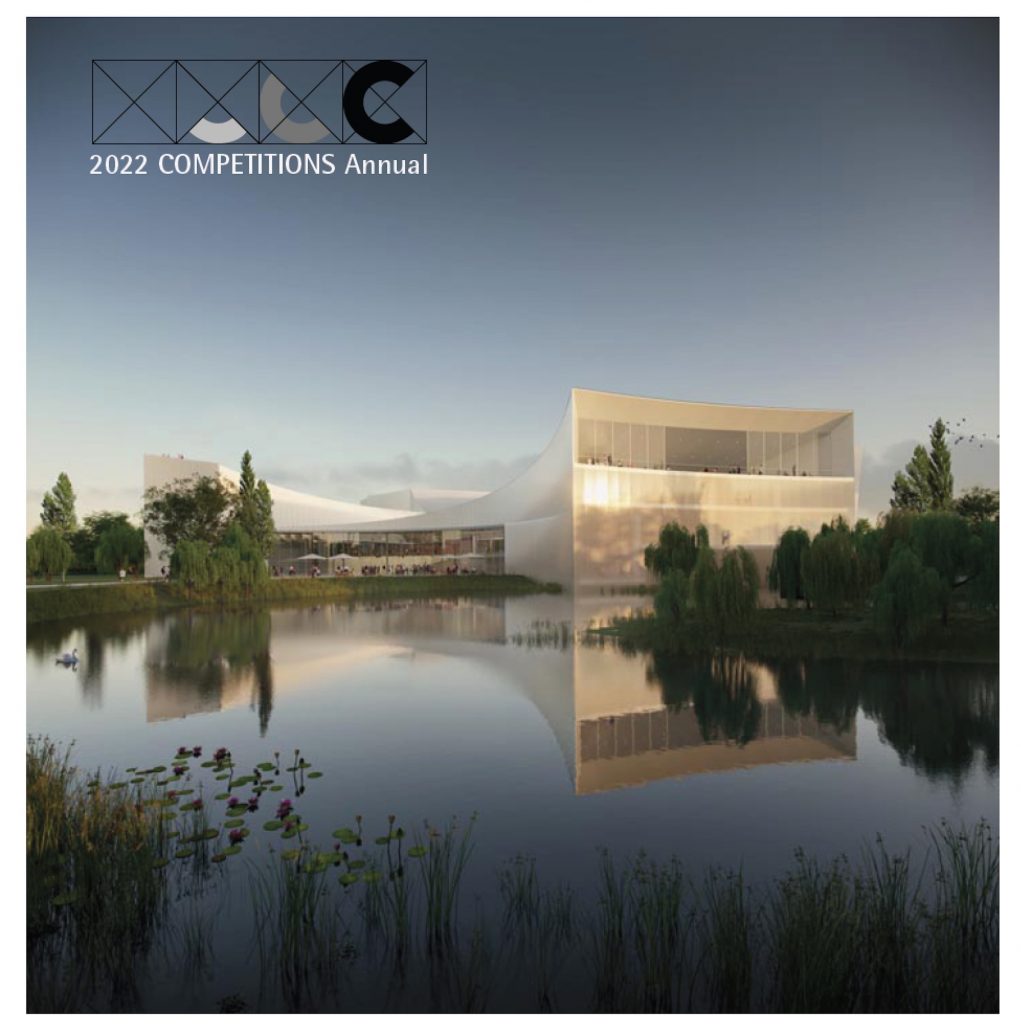Prince Charles in the White House?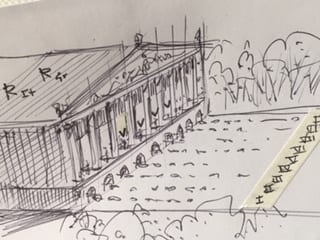
Expressway toll booth of the future ©Paul Spreiregen
Recent news about a new U.S. government policy concerning the design of public buildings under President Trump bears a striking resemblance to the controversy surrounding that very issue in the U.K. in the second half of the 20thcentury. It was then that Prince Charles appeared on the scene to challenge the use of modern design in architecture. Prince Charles’ career as architecture critic on the public stage began in 1984 with his criticism of Mies van der Rohe’s design for a new tower on Mansion House Square in London. Unfortunately for Britain’s architects, the voice of the crown carries some weight in British society, and the Mies tower was scrapped, replaced by a post-modern structure by James Stirling—which the Prince also did not like. According to the Prince, those modernist buildings resembled “Frankenstein monsters.” According to U.K.-based architects who had to deal with Charles’ pushback on modern design during that period, he was the “worst thing that happened to architecture here.” Since then, Prince Charles’ influence in blocking the evolution of modern design in the U.K. has diminished considerably with the ascendance of modern architecture as a common staple—led by architects such as Norman Foster, Richard Rogers, Amanda Levete, Zaha Hadid, John McAslan, Nicholas Grimshaw, Thomas Heatherwick, and others. Although not taken seriously by his European neighbors on the continent, Prince Charles’ ideas did find fertile ground in the U.S.—both in municipalities and even in academia, where classical architecture became a staple at such programs as Notre Dame and, to a lesser extent, Yale. At the latter, I learned from a former student there that Prince Charles even surfaced on a list of “architects” one could choose from as a topic in one seminar. Instead of peer review, federal architecture under the auspices of the General Services Administration (GSA) now will apparently be at the mercy of a “beautification” panel, which will see to it that modern architecture recedes into the background, if at all. U.S. architects may see themselves placed in the uncomfortable position German, Italian and Russian architects experienced under their totalitarian regimes in the 1930s. By embracing the primacy of classical architecture as a blueprint for public buildings, the Trump regime certainly has helped the National Civic Art Society reach its ultimate goal, at least at the federal level—requiring American architects to turn to the replication of 17thand 18thcentury-style buildings as the preferred design model. Assuming that happens, Prince Charles would be a welcome visitor in the White House. Addressing this issue, Paul Spreiregen FAIA, architect and professional adviser for the Vietnam Memorial competition states: “Architectural history is not a copybook. Rather It is a textbook, to be read with a deep understanding of the many principles upon which architecture comes into being. The history of architecture is not served by aping it but by building on it, addressing the programmatic needs of each new building in its own time and place, its neighbored respected, thereby reflecting and honoring the culture it serves.
To use the “styles” of the past as a cloak for the new is a lie, a subterfuge for respectability and supposed prestige. That is the work of authoritarian governments. Stalin, Hitler and Mussolini were its more recent and notorious promoters. They produced not architecture but laughable if not tragic cartoons of architecture. All the great works of architecture of the past were, in their own times and places, masterpieces of ancient principles seen anew. That practice has been the glory of the best of American architecture.”** *Letters to the Editor, The Washington Post, 17 February 2020 https://www.washingtonpost.com/opinions/the-glory-of-american-architecture-comes-from-building-on-its-history/2020/02/17/00296bd0-4f7d-11ea-967b-e074d302c7d4_story.html |
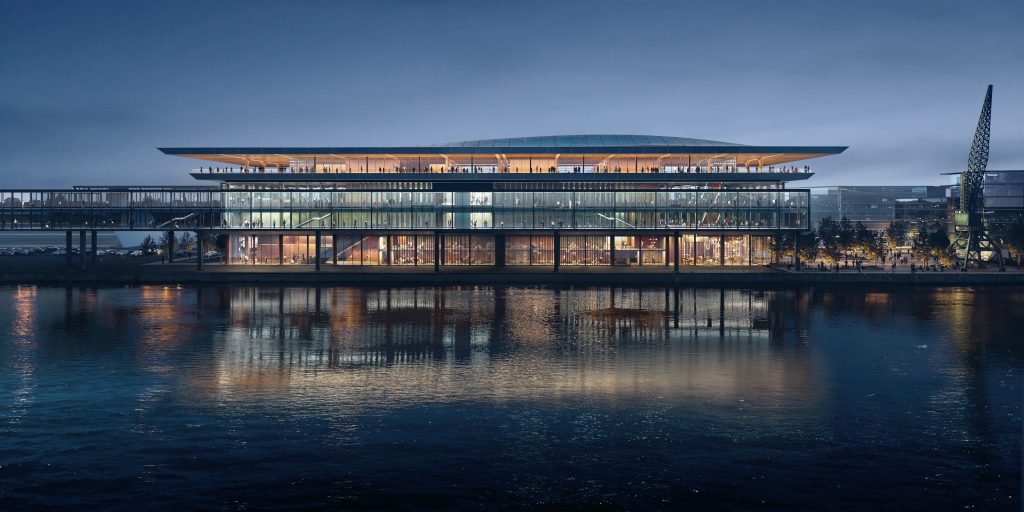
1st Place: Zaha Hadid Architects – night view from river – Render by Negativ
Arriving to board a ferry boat or cruise ship used to be a rather mundane experience. If you had luggage, you might be able to drop it off upon boarding, assuming that the boarding operation was sophisticated enough. In any case, the arrival experience was nothing to look forward to. I recall boarding the SS United States for a trip to Europe in the late 1950s. Arriving at the pier in New York, the only thought any traveler had was to board that ocean liner as soon as possible, find one’s cabin, and start exploring. If you were in New York City and arriving early, a nearby restaurant or cafe would be your best bet while passing time before boarding. Read more… Young Architects in Competitions When Competitions and a New Generation of Ideas Elevate Architectural Quality 
by Jean-Pierre Chupin and G. Stanley Collyer
published by Potential Architecture Books, Montreal, Canada 2020
271 illustrations in color and black & white
Available in PDF and eBook formats
ISBN 9781988962047
Wwhat do the Vietnam Memorial, the St. Louis Arch, and the Sydney Opera House have in common? These world renowned landmarks were all designed by architects under the age of 40, and in each case they were selected through open competitions. At their best, design competitions can provide a singular opportunity for young and unknown architects to make their mark on the built environment and launch productive, fruitful careers. But what happens when design competitions are engineered to favor the established and experienced practitioners from the very outset? This comprehensive new book written by Jean-Pierre Chupin (Canadian Competitions Catalogue) and Stanley Collyer (COMPETITIONS) highlights for the crucial role competitions have played in fostering the careers of young architects, and makes an argument against the trend of invited competitions and RFQs. The authors take an in-depth look at past competitions won by young architects and planners, and survey the state of competitions through the world on a region by region basis. The end result is a compelling argument for an inclusive approach to conducting international design competitions. Download Young Architects in Competitions for free at the following link: https://crc.umontreal.ca/en/publications-libre-acces/ 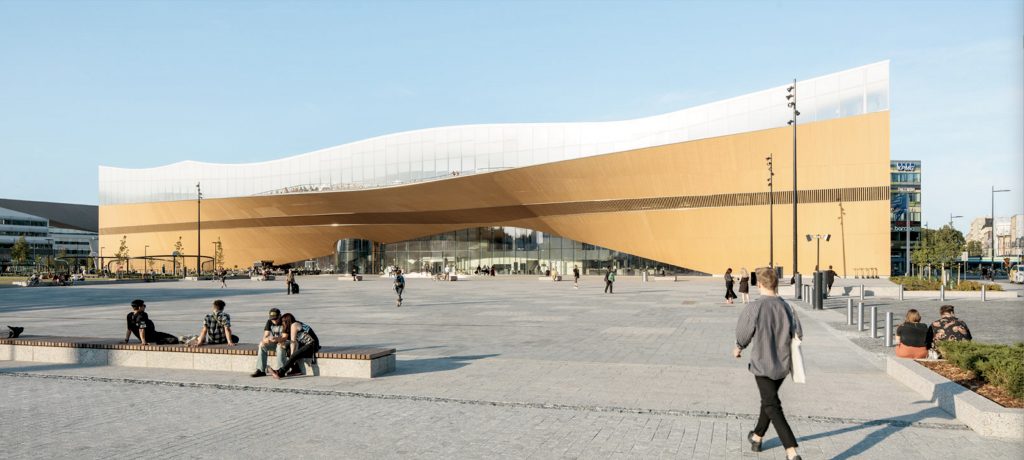
Helsinki Central Library, by ALA Architects (2012-2018)
The world has experienced a limited number of open competitions over the past three decades, but even with diminishing numbers, some stand out among projects in their categories that can’t be ignored for the high quality and degree of creativity they revealed. Included among those are several invited competitions that were extraordinary in their efforts to explore new avenues of institutional and museum design. Some might ask why the Vietnam Memorial is not mentioned here. Only included in our list are competitions that were covered by us, beginning in 1990 with COMPETITIONS magazine to the present day. As for what category a project under construction (Science Island), might belong to or fundraising still in progress (San Jose’s Urban Confluence or the Cold War Memorial competition, Wisconsin), we would classify the former as “built” and wait and see what happens with the latter—keeping our fingers crossed for a positive outcome. Read More… 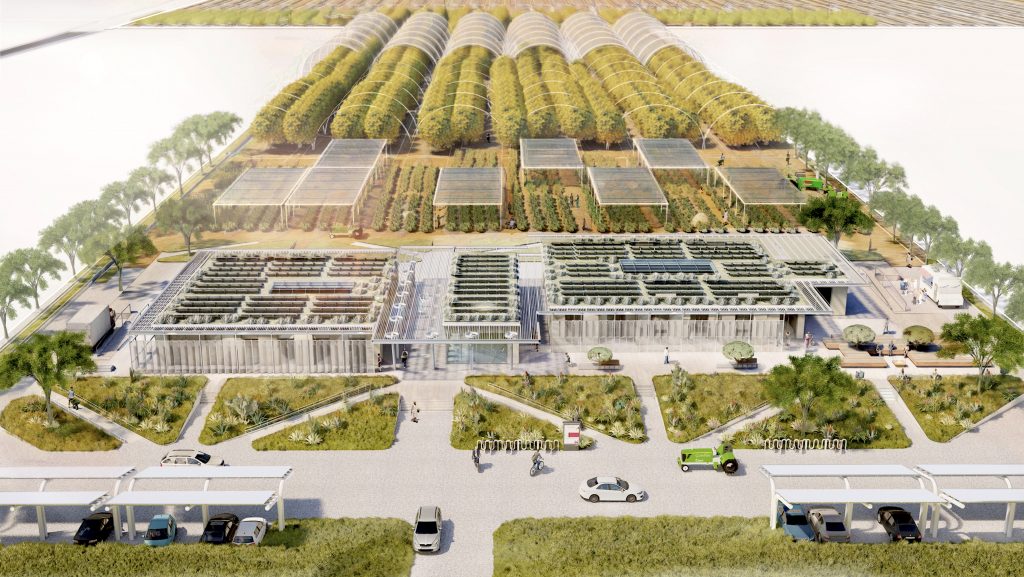
2023 Teaching and Innovation Farm Lab Graduate Student Honor Award by USC (aerial view)
Architecture at Zero competitions, which focus on the theme, Design Competition for Decarbonization, Equity and Resilience in California, have been supported by numerous California utilities such as Southern California Edison, PG&E, SoCAl Gas, etc., who have recognized the need for better climate solutions in that state as well as globally. Until recently, most of these competitions were based on an ideas only format, with few expectations that any of the winning designs would actually be realized. The anticipated realization of the 2022 and 2023 competitions suggests that some clients are taking these ideas seriously enough to go ahead with realization. Read more… 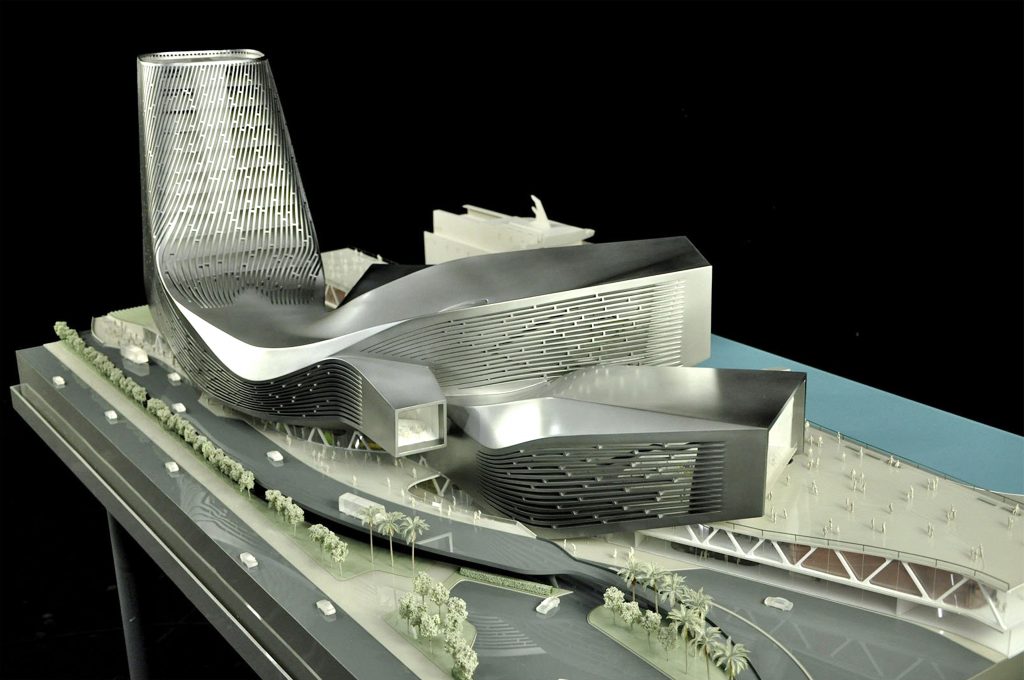
RUR model perspective – ©RUR
New Kaohsiung Port and Cruise Terminal, Taiwan (2011-2020)
Reiser+Umemoto RUR Architecture PC/ Jesse Reiser – U.S.A.
with
Fei & Cheng Associates/Philip T.C. Fei – R.O.C. (Tendener)
This was probably the last international open competition result that was built in Taiwan. A later competition for the Keelung Harbor Service Building Competition, won by Neil Denari of the U.S., the result of a shortlisting procedure, was not built. The fact that the project by RUR was eventually completed—the result of the RUR/Fei & Cheng’s winning entry there—certainly goes back to the collaborative role of those to firms in winning the 2008 Taipei Pop Music Center competition, a collaboration that should not be underestimated in setting the stage for this competition Read more… 
Winning entry ©Herzog de Meuron
In visiting any museum, one might wonder what important works of art are out of view in storage, possibly not considered high profile enough to see the light of day? In Korea, an answer to this question is in the making. It can come as no surprise that museums are running out of storage space. This is not just the case with long established “western” museums, but elsewhere throughout the world as well. In Seoul, South Korea, such an issue has been addressed by planning for a new kind of storage facility, the Seouipul Open Storage Museum. The new institution will house artworks and artifacts of three major museums in Seoul: the Seoul Museum of Modern Art, the Seoul Museum of History, and the Seoul Museum of Craft Art.
Read more… |




























